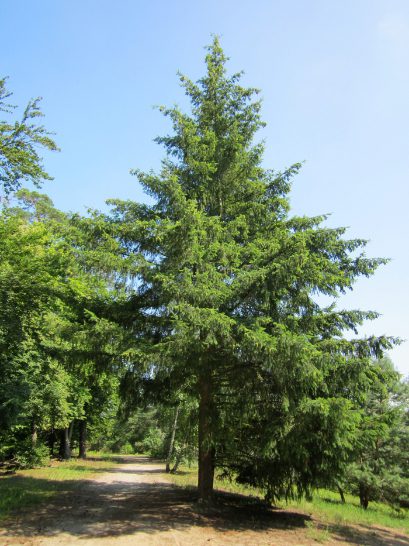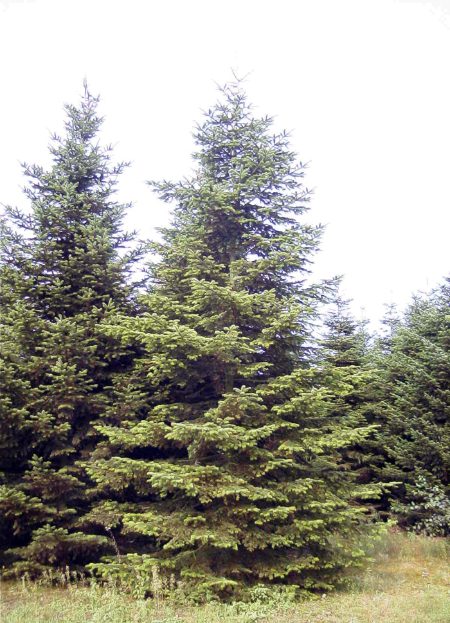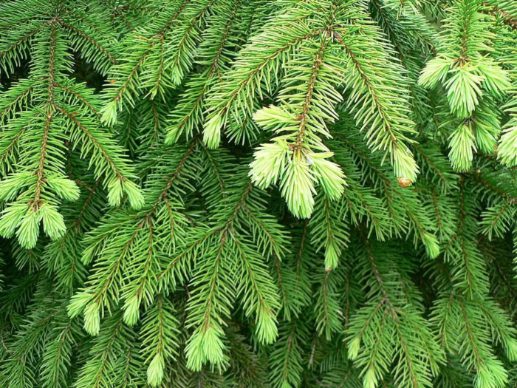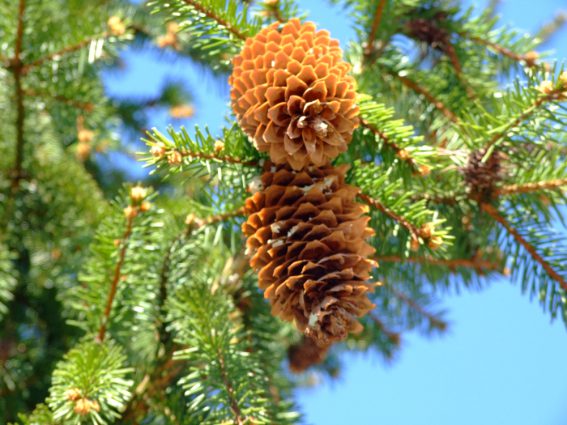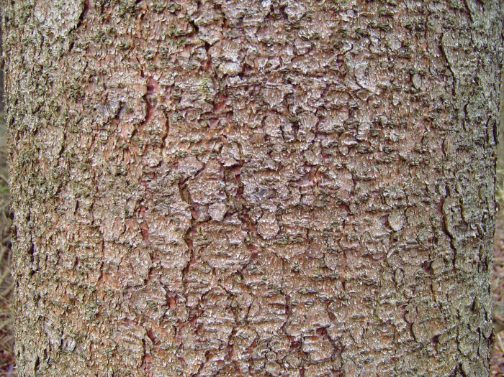Picea abies | Norway Spruce
Native to Scandinavia and the mountainous areas of Europe, the Picea abies is a fast-growing conifer that, in its natural environment, can reach heights of 40m and live for 1,000 years! This is a large tree with a straight trunk and branches that are almost horizontal with upward-pointing ends and a pointed crown. The young bark is coppery, grey-brown and appears smooth, but is rough with papery scales. Mature trees have dark, purple-brown bark with cracks, and small plates with grooved and hairless, orange-brown twigs. The needle-like leaves are dark green and pointed with fine, white-speckled lines and a rich, sweet smell. The Picea abies produces male and female flowers in spring. The male flowers consist of clusters of stamens that turn from red to yellow. When laden with pollen, female flowers are red, upright and oval, and tend to form at the top of the tree. After pollination the female produces reddish-brown cones up to 15cm long with diamond-shaped, rounded scales. This tree produces the largest cones of all spruce. The Picea abies is widespread across UK, having been planted for forestry in the 1800s. It will grow in a variety of locations, tolerates poor soil and extremes of cold and wet, although performs best in moist, fertile well-draining sites. This tree is commercially important for timber production and has many uses in the building trade: as joists, rafters, flooring and to build furniture. As part of large forests, this tree is a valuable haven and source of food for all wildlife.

